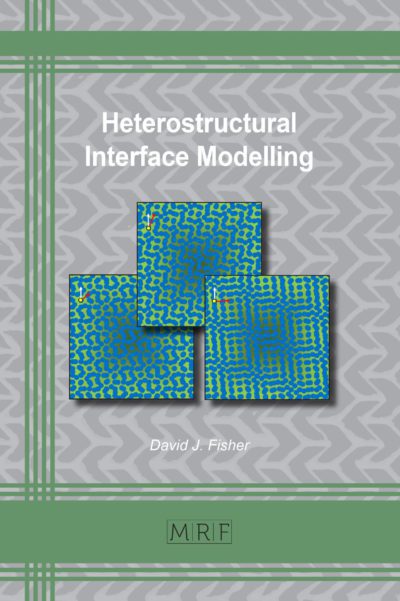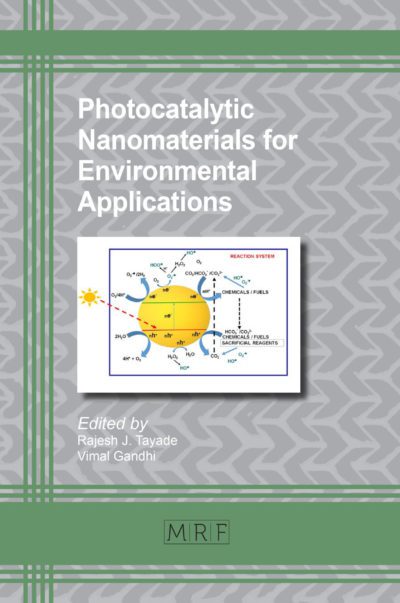Potential electrolyte additives for hydrogen economy: Screening of amino-based ionic liquids through COSMO-RS
Muhammad Usman, Mohd Dzul Hakim Wirzal, Junaid Afridi1c, Sohail Ahmad Shahani, Noor e Hira, Shafiq M Hizam
Abstract. The identification of hydrogen as a prospective energy source for the substitution of non-renewable energy sources such as fossil fuels and natural gas has been acknowledged. Nevertheless, the existing methodologies used in the production of hydrogen exhibit significant drawbacks, mostly focused on the substantial release of greenhouse gas (GHG) emissions linked to the process. One potential approach to produce environmentally friendly hydrogen is alkaline water electrolysis, whereby potassium hydroxide (KOH) is used as the electrolyte. However, alkaline water electrolyzers, which use potassium hydroxide (KOH) as an electrolyte, have significant technological challenges in their performance. Commonly used ionic liquids as an electrolyte additive in this process are non-biodegradable. Previously amino-based ionic liquids had not been used as an electrolyte additive. Therefore, it is necessary to explore some biocompatible ionic liquids to be used as an electrolyte additive. Amino-based ionic liquids include a class of chemicals that exhibit biocompatibility and provide the possibility of customization, making them a promising option for improving electrolyte properties. This study will use the Cosmo-RS quantum methodology to evaluate amino-based ionic liquids with favorable physicochemical characteristics. The anions, cations, and water structures were created using TURBOMOLE version 21.0.0 (TmoleX) and the triple valance polarised basis set (TZVP) program package. Choline glycine and Choline Serine were found to have high ionic conductivity of 0.9578 mS/cm and 0.6945 mS/cm respectively. It was also observed that proline, glycine, serine, and asparagine anions can interact with water molecules better as compared to other anions as they show high peaks in non-polar regions.
Keywords
Lionic Liquids, Hydrogen Energy, COSMO-RS, Electrolyte Additives, Ionic Conductivity
Published online 4/25/2025, 9 pages
Copyright © 2025 by the author(s)
Published under license by Materials Research Forum LLC., Millersville PA, USA
Citation: Muhammad Usman, Mohd Dzul Hakim Wirzal, Junaid Afridi1c, Sohail Ahmad Shahani, Noor e Hira, Shafiq M Hizam, Potential electrolyte additives for hydrogen economy: Screening of amino-based ionic liquids through COSMO-RS, Materials Research Proceedings, Vol. 53, pp 464-472, 2025
DOI: https://doi.org/10.21741/9781644903575-48
The article was published as article 48 of the book Decarbonization Technology
![]() Content from this work may be used under the terms of the Creative Commons Attribution 3.0 license. Any further distribution of this work must maintain attribution to the author(s) and the title of the work, journal citation and DOI.
Content from this work may be used under the terms of the Creative Commons Attribution 3.0 license. Any further distribution of this work must maintain attribution to the author(s) and the title of the work, journal citation and DOI.
References
[1] L. Amaral et al., “Toward tailoring of electrolyte additives for efficient alkaline water electrolysis: salicylate-based ionic liquids,” ACS Applied Energy Materials, vol. 1, no. 9, pp. 4731-4742, 2018. https://doi.org/10.1021/acsaem.8b00858
[2] C. Tarhan and M. A. Çil, “A study on hydrogen, the clean energy of the future: Hydrogen storage methods,” Journal of Energy Storage, vol. 40, p. 102676, 2021. https://doi.org/10.1016/j.est.2021.102676
[3] M. Rasul, M. Hazrat, M. Sattar, M. Jahirul, and M. Shearer, “The future of hydrogen: Challenges on production, storage and applications,” Energy Conversion and Management, vol. 272, p. 116326, 2022. https://doi.org/10.1016/j.enconman.2022.116326
[4] A. Pareek, R. Dom, J. Gupta, J. Chandran, V. Adepu, and P. H. Borse, “Insights into renewable hydrogen energy: Recent advances and prospects,” Materials Science for Energy Technologies, vol. 3, pp. 319-327, 2020. https://doi.org/10.1016/j.mset.2019.12.002
[5] M. Yue, H. Lambert, E. Pahon, R. Roche, S. Jemei, and D. Hissel, “Hydrogen energy systems: A critical review of technologies, applications, trends and challenges,” Renewable and Sustainable Energy Reviews, vol. 146, p. 111180, 2021. https://doi.org/10.1016/j.rser.2021.111180
[6] Z. Abdin, A. Zafaranloo, A. Rafiee, W. Mérida, W. Lipiński, and K. R. Khalilpour, “Hydrogen as an energy vector,” Renewable and sustainable energy reviews, vol. 120, p. 109620, 2020. https://doi.org/10.1016/j.rser.2019.109620
[7] Y. Gong, J. Yao, P. Wang, Z. Li, H. Zhou, and C. Xu, “Perspective of hydrogen energy and recent progress in electrocatalytic water splitting,” Chinese Journal of Chemical Engineering, vol. 43, pp. 282-296, 2022. https://doi.org/10.1016/j.cjche.2022.02.010
[8] J. Brauns and T. Turek, “Alkaline water electrolysis powered by renewable energy: A review,” Processes, vol. 8, no. 2, p. 248, 2020. https://doi.org/10.3390/pr8020248
[9] S. Hu et al., “A comprehensive review of alkaline water electrolysis mathematical modeling,” Applied Energy, vol. 327, p. 120099, 2022. https://doi.org/10.1016/j.apenergy.2022.120099
[10] K. Chen, B. Xu, L. Shen, D. Shen, M. Li, and L.-H. Guo, “Functions and performance of ionic liquids in enhancing electrocatalytic hydrogen evolution reactions: a comprehensive review,” RSC advances, vol. 12, no. 30, pp. 19452-19469, 2022. https://doi.org/10.1039/D2RA02547G
[11] L. Amaral, D. Cardoso, B. Šljukić, D. Santos, and C. Sequeira, “Room temperature ionic liquids as electrolyte additives for the HER in alkaline media,” Journal of The Electrochemical Society, vol. 164, no. 4, p. F427, 2017. https://doi.org/10.1149/2.0011706jes
[12] A. Nikpour, M. Moosavi, and M. Torkzadeh, “Structural, spectral, and dynamical behaviors of biodegradable choline-based ionic liquids (CBILs) confined inside neutral and charged mxene nanopores for supercapacitor applications,” Colloids and Surfaces A: Physicochemical and Engineering Aspects, vol. 674, p. 131968, 2023. https://doi.org/10.1016/j.colsurfa.2023.131968
[13] A. Le Donne and E. Bodo, “Cholinium amino acid-based ionic liquids,” Biophysical reviews, vol. 13, no. 1, pp. 147-160, 2021. https://doi.org/10.1007/s12551-021-00782-0
[14] Y. Cao, Z. Wu, Y. Zhang, Y. Liu, and H. Wang, “Screening of alternative solvent ionic liquids for artemisinin: COSMO-RS prediction and experimental verification,” Journal of Molecular Liquids, vol. 338, p. 116778, 2021. https://doi.org/10.1016/j.molliq.2021.116778
[15] Z. Song, J. Wang, and K. Sundmacher, “Evaluation of COSMO-RS for solid-liquid equilibria prediction of binary eutectic solvent systems,” Green Energy & Environment, vol. 6, no. 3, pp. 371-379, 2021. https://doi.org/10.1016/j.gee.2020.11.020
[16] M. Wlazło, E. I. Alevizou, E. C. Voutsas, and U. Domańska, “Prediction of ionic liquids phase equilibrium with the COSMO-RS model,” Fluid Phase Equilibria, vol. 424, pp. 16-31, 2016. https://doi.org/10.1016/j.fluid.2015.08.032
[17] N. Islam, H. W. Khan, A. A. Gari, M. Yusuf, and K. Irshad, “Screening of ionic liquids as sustainable greener solvents for the capture of greenhouse gases using COSMO-RS approach: Computational study,” Fuel, vol. 330, p. 125540, 2022. https://doi.org/10.1016/j.fuel.2022.125540
[18] K. Yu et al., “Ionic liquids screening for lignin dissolution: COSMO-RS simulations and experimental characterization,” Journal of Molecular Liquids, vol. 348, p. 118007, 2022. https://doi.org/10.1016/j.molliq.2021.118007
[19] C. Y. Foong et al., “COSMO-RS prediction and experimental investigation of amino acid ionic liquid-based deep eutectic solvents for copper removal,” Journal of Molecular Liquids, vol. 333, p. 115884, 2021. https://doi.org/10.1016/j.molliq.2021.115884
[20] H. W. Khan et al., “Evaluating ionic liquids for its potential as eco-friendly solvents for naproxen removal from water sources using COSMO-RS: computational and experimental validation,” Environmental Research, vol. 231, p. 116058, 2023. https://doi.org/10.1016/j.envres.2023.116058
[21] S. A. Shahani, H. W. Khan, A. M. Shaiff, M. Goto, and M. Moniruzzaman, “Screening of ionic liquids for the solubility enhancement of quinine using COSMO-RS,” Journal of Molecular Liquids, p. 125388, 2024. https://doi.org/10.1016/j.molliq.2024.125388
[22] D. D. A. de Fátima Palhares, L. G. M. Vieira, and J. J. R. Damasceno, “Hydrogen production by a low-cost electrolyzer developed through the combination of alkaline water electrolysis and solar energy use,” International Journal of Hydrogen Energy, vol. 43, no. 9, pp. 4265-4275, 2018. https://doi.org/10.1016/j.ijhydene.2018.01.051
[23] P. Nancarrow, A. Al-Othman, D. K. Mital, and S. Döpking, “Comprehensive analysis and correlation of ionic liquid conductivity data for energy applications,” Energy, vol. 220, p. 119761, 2021. https://doi.org/10.1016/j.energy.2021.119761
[24] R. A. A. Talip, W. Z. N. Yahya, and M. A. Bustam, “Understanding the physicochemical and transport properties of pyrazolium based ionic liquids bearing iodide and triiodide anions,” Journal of Molecular Liquids, vol. 346, p. 118270, 2022. https://doi.org/10.1016/j.molliq.2021.118270
[25] R. A. A. Talip, W. Z. N. Yahya, and M. A. Bustam, “Viscosity and ionic conductivity of imidazolium based ionic liquids bearing triiodide anion,” in E3S Web of Conferences, 2021, vol. 287: EDP Sciences, p. 02015. https://doi.org/10.1051/e3sconf/202128702015
[26] W.-L. Yuan, X. Yang, L. He, Y. Xue, S. Qin, and G.-H. Tao, “Viscosity, conductivity, and electrochemical property of dicyanamide ionic liquids,” Frontiers in chemistry, vol. 6, p. 59, 2018. https://doi.org/10.3389/fchem.2018.00059
[27] F. Fiegenbaum, E. M. Martini, M. O. de Souza, M. R. Becker, and R. F. de Souza, “Hydrogen production by water electrolysis using tetra-alkyl-ammonium-sulfonic acid ionic liquid electrolytes,” Journal of power sources, vol. 243, pp. 822-825, 2013. https://doi.org/10.1016/j.jpowsour.2013.06.077
[28] O. Hollóczki, F. Malberg, T. Welton, and B. Kirchner, “On the origin of ionicity in ionic liquids. Ion pairing versus charge transfer,” Physical Chemistry Chemical Physics, vol. 16, no. 32, pp. 16880-16890, 2014. https://doi.org/10.1039/C4CP01177E
[29] Y. Zheng, Y. Zheng, Q. Wang, and Z. Wang, “Density, viscosity, and electrical conductivity of 1-alkyl-3-methylimidazolium dicyanamide ionic liquids,” Journal of Chemical & Engineering Data, vol. 66, no. 1, pp. 480-493, 2020. https://doi.org/10.1021/acs.jced.0c00754













